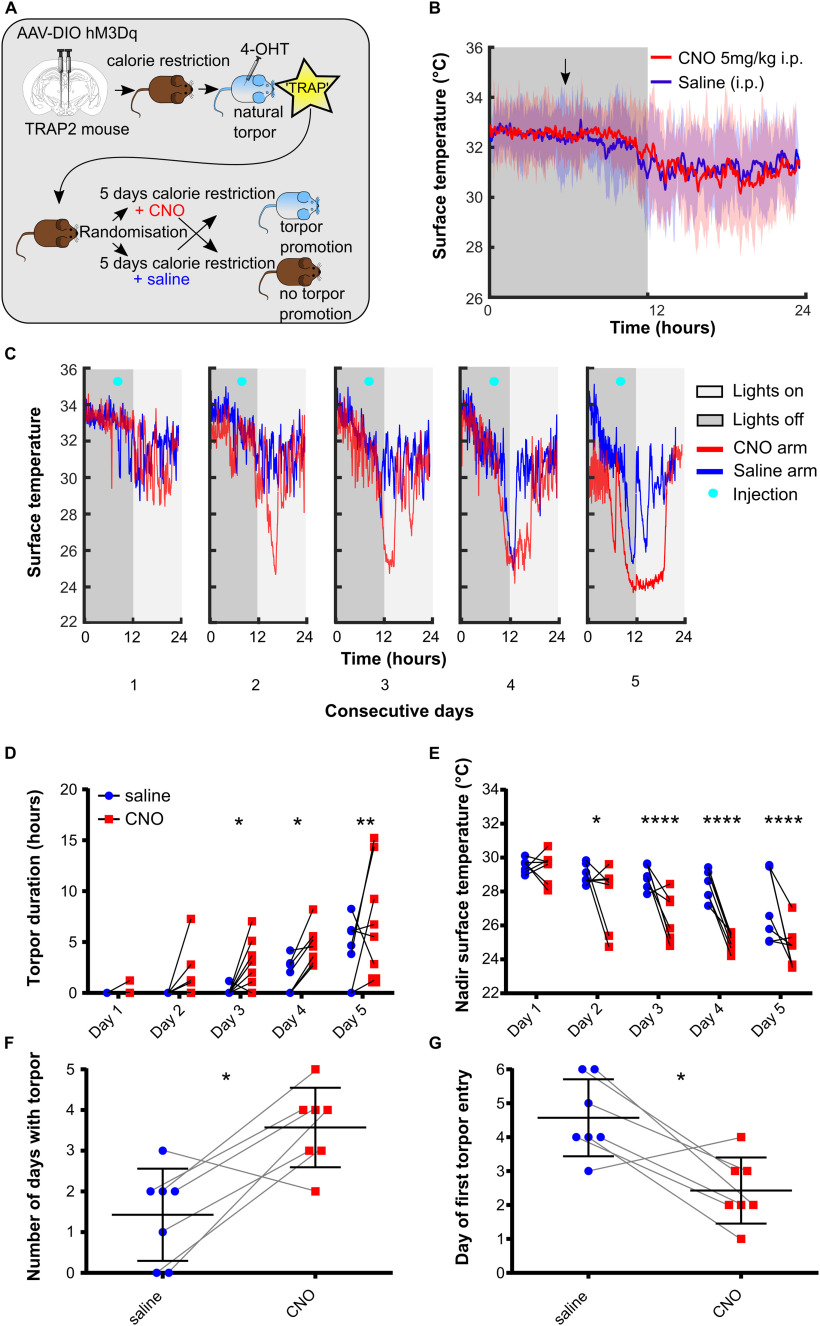Figure 3.
Chemoactivating DMH torpor-TRAPed neurons promote, prolong, and deepen torpor bouts in calorie-restricted mice (n = 7 female Torp+ hM3Dq mice). A, DMH injection and torpor-TRAP protocol. B, CNO does not trigger torpor in DMH torpor-TRAPed mice that are not calorie-restricted. Shaded area represents 95% CI. C, Example plot showing surface temperature in calorie-restricted DMH torpor-TRAPed mice receiving CNO (red) or saline (blue) at 7 h after lights off (cyan marker). D, CNO given to calorie-restricted DMH torpor-TRAPed mice increases the total time spent in torpor and decreases the nadir surface temperature reached (D and E, respectively). Two-way repeated-measures ANOVA, significant main effect for CNO versus saline trials: p < 0.05 for both torpor duration and nadir temperature. Holm–Sidak's multiple comparisons test: significant difference between CNO and saline on individual days (*p < 0.05, **p < 0.01, ***p < 0.001, and ****p < 0.0001, respectively). CNO increased the total number of days in which torpor occurred and resulted in torpor occurring after fewer days of calorie restriction (F and G, respectively). Wilcoxon matched-pairs signed rank test or paired t test, comparing number of torpor bouts and day of first torpor bout when mice received CNO versus saline (*p < 0.05).

